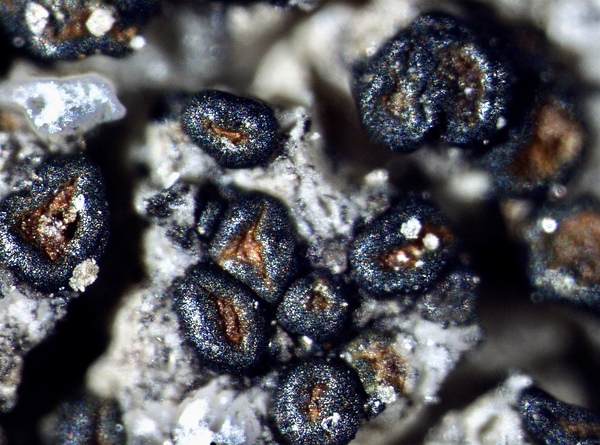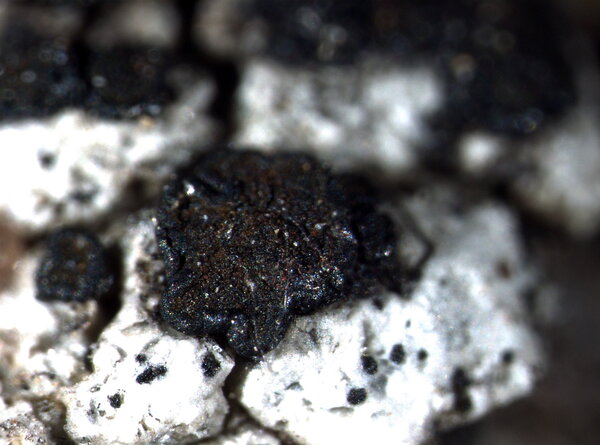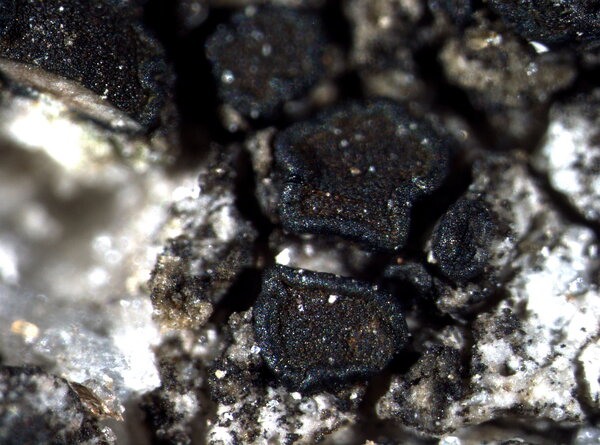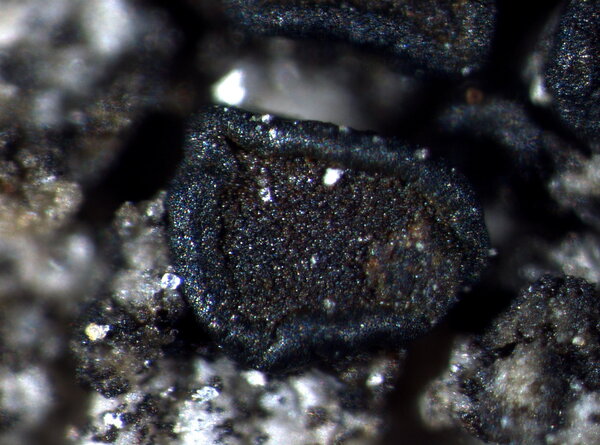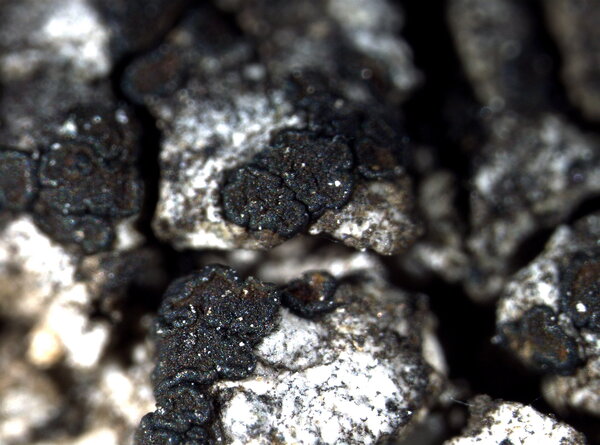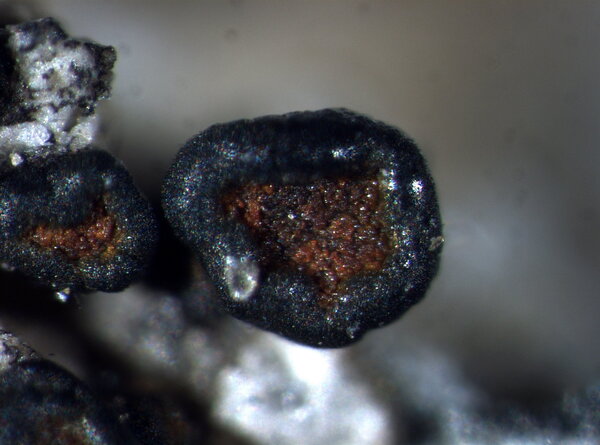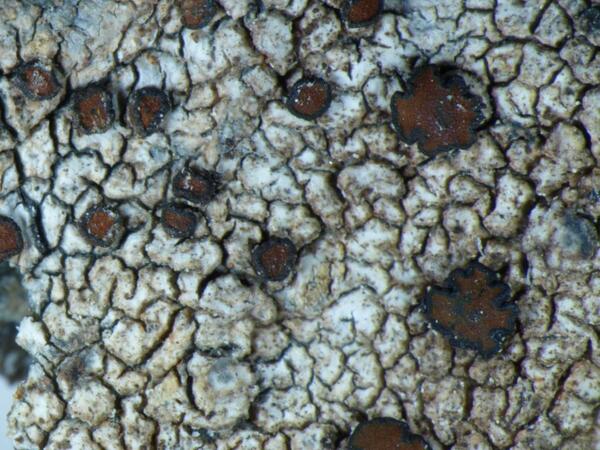Caloplaca conciliascens (Nyl.) Zahlbr.
Cat. Lich. Univ., 7: 109, 1931. Basionym: Lecanora conciliascens Nyl. - Flora, 63: 388, 1880.
Synonyms:
Distribution: N - Piem (TSB 33345). C - Sar.
Description: Thallus crustose, usually thinly episubstrati, continuous to areolate, greyish white, sometimes poorly evident. Apothecia lecideine, sessile, clustered, round to angular by mutual compression, 0.5-1 mm across, with a brownish red, flat to slightly convex disc, and a thin, black, persistent, slightly flexuose proper margin. Proper exciple without algae, blackish green in outer part, K-, N+ purple-red, colourless within; epithecium orange-brown, K+ violet-red; hymenium colourless, 60-85 μm high; paraphyses simple or sparingly branched in upper part, with slightly swollen apical cells; hypothecium colourless, inspersed with oil droplets, c. 80 μm high. Asci 8-spored, clavate, functionally unitunicate, apically thickened with a broad internal beak, the inner part of apex and external cap I+ blue, Teloschistes-type. Ascospores 2-celled, polarilocular, hyaline, ellipsoid, 10-14 x 5-7 μm, the equatorial thickening (“septum”) 3-4(-5) μm. Photobiont chlorococcoid. Spot tests: thallus K-, C-, KC-, P-, N+ faintly violet. Chemistry: Cinereorufa-green pigment in thallus and apothecial margin; epithecium with non-chlorinated anthraquinones. Note: a poorly known species, perhaps a synonym of Lendemeriella exsecuta, known from the locus classicus in Tyrol, Poland, a single locality in the French Maritime Alps (Roux & coll. 2014), and from dry-warm sites in central Sardinia and in Piemonte. The identification of the Sardinian collection is not completely certain (Nimis & Poelt 1987: 60). A detailed discussion of this species was provided by Wilk & Flakus (2006).
Growth form: Crustose
Substrata: rocks
Photobiont: green algae other than Trentepohlia
Reproductive strategy: mainly sexual
Commonnes-rarity: (info)
Alpine belt: absent
Subalpine belt: extremely rare
Oromediterranean belt: absent
Montane belt: extremely rare
Submediterranean belt: absent
Padanian area: absent
Humid submediterranean belt: absent
Humid mediterranean belt: absent
Dry mediterranean belt: absent

Predictive model
Herbarium samples
Growth form: Crustose
Substrata: rocks
Photobiont: green algae other than Trentepohlia
Reproductive strategy: mainly sexual
Commonnes-rarity: (info)
Alpine belt: absent
Subalpine belt: extremely rare
Oromediterranean belt: absent
Montane belt: extremely rare
Submediterranean belt: absent
Padanian area: absent
Humid submediterranean belt: absent
Humid mediterranean belt: absent
Dry mediterranean belt: absent

Predictive model
| Herbarium samples |
 INDEX FUNGORUM
INDEX FUNGORUM
 GBIF
GBIF
